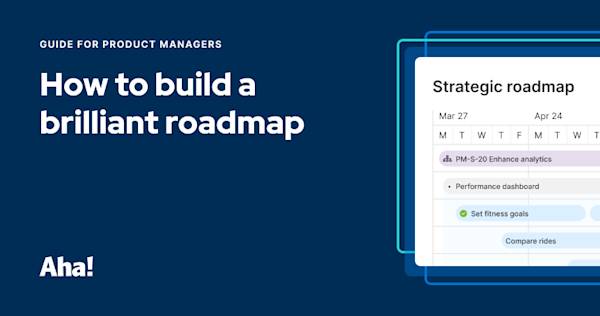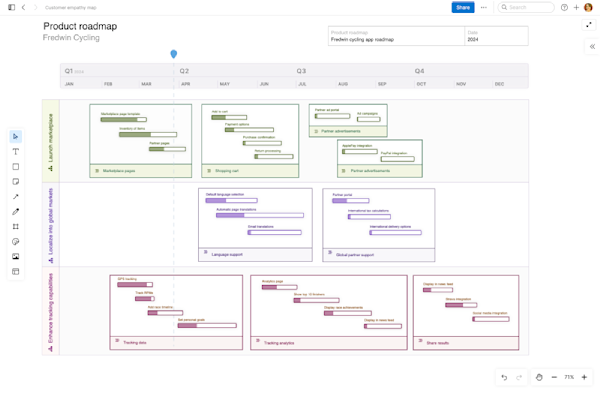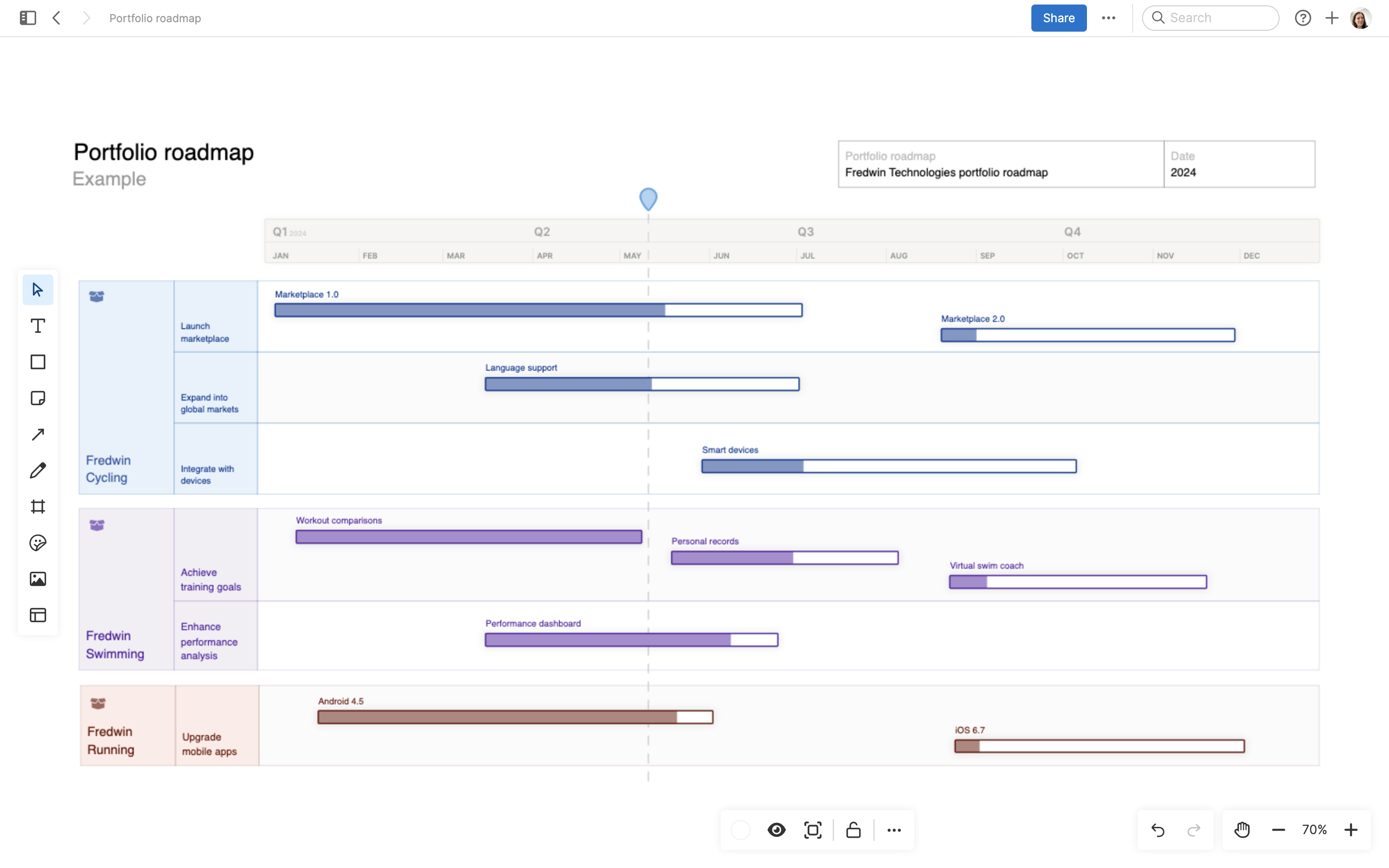FAQs about program and portfolio management
What customization options are available for the templates listed?
Each template (in our library of more than 100) includes relevant best practices and a pre-filled example. But you can modify any note or whiteboard template to fit your specific needs. Include rich text formatting and change labels, colors, and shapes. Add media such as screenshots and include dynamic diagrams. With the Aha! Whiteboards Advanced plan, you can also create your own custom templates and share them across teams.
How do templates facilitate better communication and collaboration among cross-functional teams?
Using consistent templates across teams and departments helps ensure all information is communicated in a clear and accessible way. This promotes alignment and participation cross-functionally, as everyone becomes accustomed to the same workflow and process. With Aha! Whiteboards, you can invite unlimited guests to your whiteboards and adjust permissions depending on the level of feedback needed. View, edit, comment, react with emojis, and even vote on specific aspects of your whiteboard to secure the valuable input needed to move ahead.
With regard to the roadmap whiteboard templates, how do I know when it is time to shift to more robust roadmapping software?
Whiteboard templates such as the epics roadmap and product portfolio roadmap (both mentioned in this guide) are ideal for sketching out early-stage plans within program and portfolio management. Use them to quickly visualize your thoughts and collaborate on plans with the team.
As concepts begin to solidify and it is time to get more detailed, you can take any element within your whiteboard template and convert it into an initiative, idea, epic, or feature within more robust software such as Aha! Roadmaps. And it goes both ways. That means you can pull any existing ideas, epics, and feature records into your whiteboard, giving you the flexibility to explore different approaches before finalizing the path forward.



